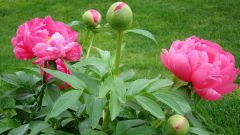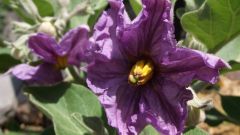Plants are very sensitive to changes in conditions, time of irrigation, the angle of incidence of sunlight, the change of fertilizers, the change of seasons, etc. So you need to constantly monitor their Pets to prevent possible unpleasant consequences. And if they still appeared, as for example, drying or tightening of the leaves, it is necessary to take appropriate action.
Causes of twisting of the leaf may be different. Wrong place in the room, lack of moisture, lack of certain vitamins and minerals, attack by insects, rodents, fungi and bacteria.
Too warm or dry indoor air leads to a twisting of the leaves of houseplants. Thus, the reduced leaf surface and evaporates less water, i.e. the plant conserves moisture. In this case, you must carefully water it and spray water from a spray bottle (if you have a plant, some cultures do not like) and then find a cool place with normal humidity level.
The same thing happens to garden plants during a heat wave, drought and strong winds. It is abundantly watered the trees and plants, but it should be done in the absence of strong heat, such as early morning or evening, otherwise the leaves will burn.
Twisting leaves could be a signal to growers about the lack of microelements, and in the form of a sheet, you can determine what exactly. For example, if the edges of the leaves curl inward, and the leaves take on the mottling, the plant lacks molybdenum. Curl up the leaves of plants depleted in zinc.
For calcium deficiency, the leaves begin to lose their bright color and wrapped down about a third of the length. Copper deficiency affected mainly cereals (wheat, oats), in this case their leaves are twisted into a spiral. Resistant to the loss of micronutrients is the potatoes.
The leaves may curl because of attacks of various pests such as fungus, virus bacteria, rodents (moles, mice). Small pests are transferred, usually aphids. With the spread of the virus leaves of damaged plants are twisted up, and in the deep phase of infection can be observed curvature of the tips of the undulation, lack of growth and other dire consequences.
Unfortunately, it is often to detect the virus at an early stage is not possible, so you need to periodically inspect garden plants and remove the root or tuber diseased individuals to the disease was not transmitted to their neighbours. Sick leaves indoor plants should be inspected thoroughly and immediately tear off diseased leaves from the bottom and treat the plant with a special solution or broth.
Rodents gnaw rhizomes of garden plants and eat the leaves. Most damage is caused by voles, which eat not only plants, but also carries the virus. Unfortunately, viruses are very resistant to adverse conditions, including winter weather, so to get rid of them is not easy.
Moles do not eat plants, but they feed on the insect pests of the garden and their larvae, therefore, may damage the plant's roots, laying itself a way under ground. To get rid of the furry pests, you can use smoke bombs (nor), rags soaked in kerosene, whirring turntables and electronic and ultrasonic traps.
The reason for the defeat of plants can also be a folly of gardeners who purchase plants without knowing its features. Thus, it is not possible to have care, green thumb does it by trial and often kills the plant. Therefore, you should be careful when buying unfamiliar, to take timely measures to protect the pet.


